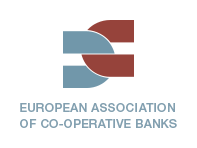Deeply anchored within the local economy
Cooperative banks are key actors in the European society. They provide access to finance at local level and are widespread even in remote areas of the continent. More than 36,500 outlets offer close and unique relationships with customers. The European cooperative movement also reflects the tradition of responsibility and social cohesion since their creation in the 19th Century. Their wide-ranging networks often make them the main employers and taxpayers in their own regions. Cooperative banks employ approximately 737,000 people in Europe.
Property of their own members/customers
Clients can become members/owners of cooperative banks with relatively small investments. As a result, they have a direct say in the business and are involved in the governance, strategy and risk management processes. The core business of cooperative banks is value creation for their members and a long-term relationship of trust, as opposed to the profit maximisation approach of mainstream banks.
One person = one vote
Cooperative banks bring together modernity, innovation and the traditions of the founding fathers of the movement, namely Raiffeisen and Schulze-Delitzsch. They comply with the banking and cooperative legislation of their respective countries, with the key principle of one person=one vote, found in the EACB Statute. Their unique stakeholder structure brings about efficiency and sound governance: members control the cooperative by exerting checks and balances at each level of the business. This minimises the organisation’s risk, identifies creditworthiness and provides immediate response to customers’ needs.
Sound business practices and resilient structures
Cooperative banks generally have a high level of capitalisation, stable incomes from retail business and a diversified credit portfolio. Credit ratings reflect this very well; ranging between AA and AAA for the largest cooperative banking groups in Western Europe. Stakeholder banks are able to face the challenges of the new post-crisis environment because their business model responds to current needs and expectations.
Financing the real economy
Cooperative banks contribute to stability thanks to their proximity to their clients. They continue to provide credit to their clients and members in good and bad times. They are key players in financing the real economy: the households and the SMEs on our territories. In Austria, Denmark, Finland, France, and Germany cooperative banks’ market share in loans ranges from 20% to 60%. In Germany, Finland, France, and the Netherlands market share for SMEs represents 30% or higher.
Leading the way in the field of social responsibility
Cooperative banks foster self-help, responsibility and solidarity. They emphasise the common good of society. They were historically founded to improve access to finance for their members, who would otherwise have had limited access to finance at reasonable rates. As a result, cooperative banks take part in a range of schemes, such as microfinance and financial education of long-term unemployed personnel. They also traditionally foster the development of their communities through cultural sponsorship and responsible citizenship. Cooperative banks are among the market leaders for Socially Responsible Investment (SRI) products such as funds and savings accounts. Nowadays, green finance is gaining an increasing importance; customers can contribute to the preservation of the environment through a variety of investment solutions.




